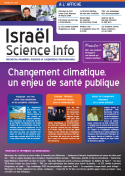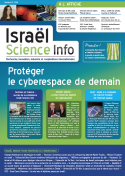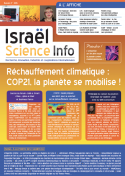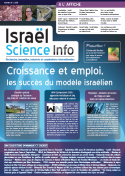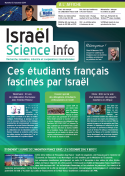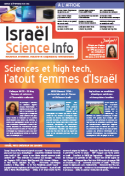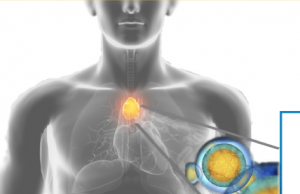A hereditary autoimmune disease that was thought to be exceedingly rare may have a less severe form that affects one in 1,000 people or even more, according to new research conducted at the Weizmann Institute of Science, in Israel, and the University of Bergen, in Norway. The results of this research suggest that a number of different autoimmune diseases and syndromes may be tied to mutations in a single gene. Among other things, these findings, combined with other research in the Weizmann lab, may help provide new means of diagnosing and treating autoimmune disorders.
The rare form of the disease, Autoimmune polyendocrine syndrome type-1, is recessive: It occurs when a child inherits two mutated versions of the AIRE (AutoImmune REgulator) gene, causing a devastating constellation of medical problems ranging from an attack on and destruction of multiple body’s tissues and organs, to chronic infections. Like all autoimmune diseases, it arises when the body’s immune cells mistake “self” for “foreign,” and thus assault the body’s own tissue. Dr. Jakub Abramson of the Weizmann Institute’s Immunology Department explains that a malfunctioning AIRE gene is able to affect so many organs because it has the unique job of preventing such autoimmune attacks by overseeing the training of the immune cells to ignore our self-made antigens and only attack those of invading pathogens.
The AIRE gene is almost exclusively expressed in just one organ – the thymus. This small organ is where T cells – the “special forces” of the immune system – undergo a sort of “basic training” before being released into the bloodstream for their defense mission. In the thymus, AIRE operates in unusual cells called medullary thymic epithelial cells, or mTECs, that act as “examiners,” checking T cells to make sure that they will not react to any of the thousands of self-antigens produced naturally in the body. The mTECs do this by creating a comprehensive gene expression library – expressing almost every gene in the genome – and testing T cells for their reaction to each. Any that go after a self-antigen are eliminated in the thymus, before they get to other organs. As its name suggests, the AIRE gene is in charge of this whole process; it controls the expression of thousands of self-antigen genes, for example, insulin, within the thymus.
Clearly people carrying mutations in both copies of the AIRE gene suffer from a severe autoimmune syndrome, but what about those who carry a mutation in only one copy of the AIRE gene? The common medical wisdom says that the disease is recessive – that is, symptoms will only arise if both copies of the AIRE gene are mutated. Abramson and Dr. Eystein S. Husebye of the University of Bergen challenged this widely accepted notion, however; they demonstrated that even mutation in a single copy of the AIRE gene may be enough to disrupt its function and cause devastating autoimmunity. This is because AIRE proteins bind to one other, forming an active complex and, as in other, similar cases, a specific mutation in one copy is enough to disrupt the function of the entire complex in a so-called dominant manner.
The study arose from an unusual clinical observation in Husebye’s lab, in which a patient had an autoimmune syndrome pointing to recessive AIRE mutations. However, when the AIRE gene was analysed they found a mutation in only one copy of the AIRE gene. The group then analysed the children of this patient: Those carrying the single mutated copy had also developed an autoimmune disorder, but it was milder and did not match the symptoms of the recessive AIRE-dysfunction syndrome. Abramson and Husebye hypothesized that such dominant AIRE mutations may be a common cause of autoimmune disorders. To address this question, the two research groups performed various experiments in the lab and also looked at medical data that had been collected from families in Norway, Finland and Russia who suffered from various forms of autoimmunity. They found that many – but not all – of those whose genetic information revealed mutations in just one copy of the gene had been diagnosed with various autoimmune syndromes and disorders.
Further research revealed that only mutations at certain sites of the AIRE gene confer dominance over the healthy gene. Interestingly, however, the healthy gene is not completely negated: The dominant version of the disease is less severe, appears later in life, and may affect fewer organs than in the recessive version where both copies are mutated.
How many people could be suffering from dominant AIRE-mutation autoimmune disease? Based on available genetic data, the researchers estimate that at least one in 1,000 people may have such mutations. “A dominant AIRE malfunction could explain the mechanism of a number of autoimmune diseases,” says Abramson.
In other research into AIRE, which recently appeared in Nature Immunology, Abramson and his group discovered that the master regulator is, itself, regulated by another regulator – a gene called Sirt1. Sirt genes are active in every corner of the body; recent research has shown them to be involved in metabolism, longevity and fertility. But Abramson and his group found that the mTECs had exceptionally high levels of the Sirt1 protein – about 100 times the average. In other words, mTECS are the prime Sirt1-expressing cells in the entire body. A closer look revealed that the Sirt1 is there to ensure that the Aire protein is activated; it removes a chemical group from the Aire structure, thus initiating the mTEC gene expression process.
This newly-discovered partnership between the two genes may shed some important light on the causes of various autoimmune diseases, for example, type1 diabetes, a disease characterized by autoimmune destruction of the beta cells in the pancreas. In addition, it may improve the diagnosis of autoimmune disorders and point the way to drug development for a number of these diseases.
Publication in Immunity, June 2015









